- Quick Read
- Deep Read ( 4 Min. )
Monitor Daily Podcast
- Follow us:
- Apple Podcasts
- Spotify
- RSS Feed
- Download
TODAY’S INTRO
Ohio faces major abortion vote
 Mark Sappenfield
Mark Sappenfield
Today is Election Day in the United States. No, not that Election Day, but an important one. Perhaps most interesting is voters in solidly red Ohio leaning toward adding abortion protections to their state constitution.
If that passes, it will be a huge win for abortion rights. But polls show that Americans have complex views on abortion. Our “Looking Past Roe” series explored this masterfully. Ohio voters are trying to define those complex views in law. That won’t end today. “Win” or “lose,” finding a way to talk respectfully and listen honestly will help chart the way forward.
Share this article
Link copied.

Help fund Monitor journalism for $11/ month
Already a subscriber? Login

Monitor journalism changes lives because we open that too-small box that most people think they live in. We believe news can and should expand a sense of identity and possibility beyond narrow conventional expectations.
Our work isn't possible without your support.
Gun rights for abusers? Justices seem skeptical.
U.S. federal law bars those with a standing domestic violence restraining order from owning firearms. A case before the Supreme Court today challenges that. Recently, the court has aggressively expanded gun rights. What are the limits on those rights? This case is a crucial test.
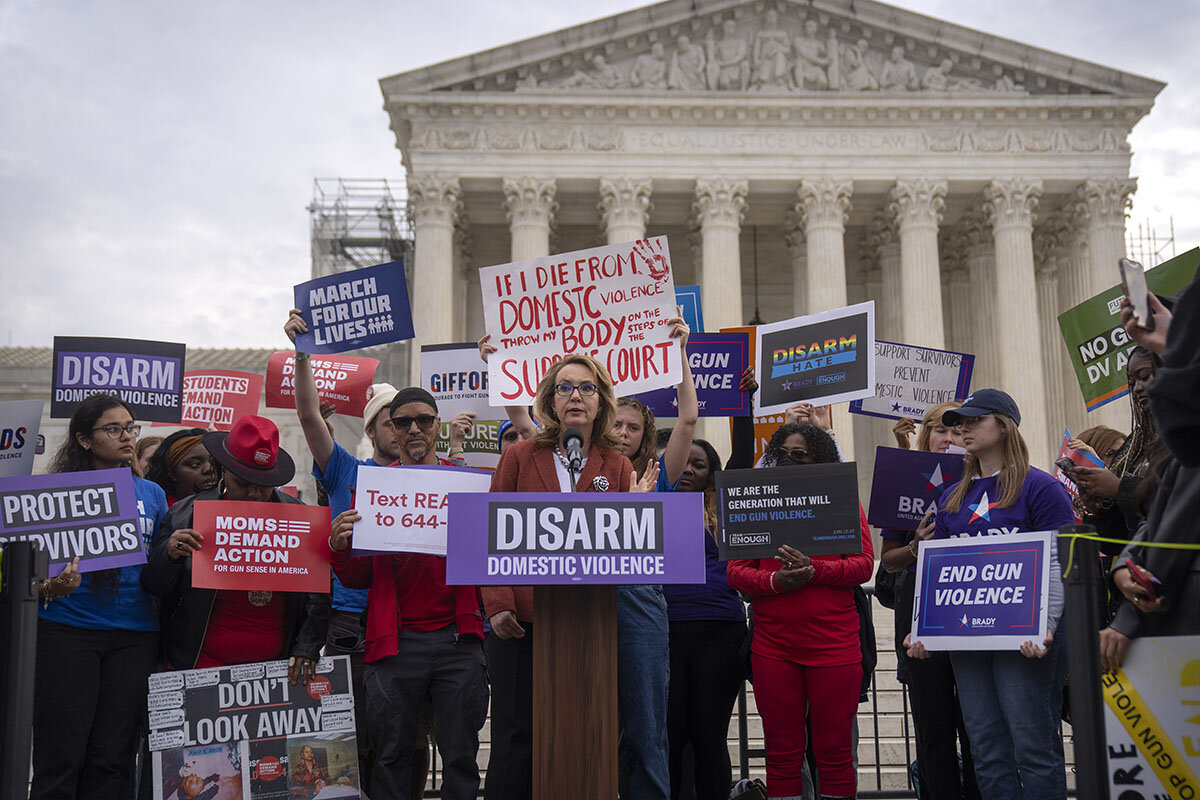
The Supreme Court today appeared skeptical that the Constitution protects the right of a domestic abuser to possess a firearm.
A year after issuing a decision expanding the Second Amendment right to carry a gun, the justices heard oral arguments in a case testing the limits of that right – and testing the functionality of a history-and-tradition test the court outlined in that 2022 decision.
Over two hours of arguments, the justices grappled with questions of when, and how, to balance constitutional tradition against personal safety. They also debated how a right crafted almost 250 years ago – when women possessed very few rights of their own – can be regulated in a modern world where guns mean domestic fights can have deadly consequences.
Setting aside the constitutional question, there seemed little doubt among the justices that plaintiff Zackey Rahimi, who court documents say shot at several people after he was placed under a protective order, represents a danger to his ex-girlfriend – and the community at large.
“You don’t have any doubt that your client’s a dangerous person, do you?” Chief Justice John Roberts asked Matthew Wright, Mr. Rahimi’s lawyer.
Mr. Wright answered that he would want to know “what ‘dangerous person’ means at the moment.”
“Well, it means someone who’s shooting, you know, at people. That’s a good start,” replied the chief justice.
Gun rights for abusers? Justices seem skeptical.
The U.S. Supreme Court today appeared skeptical that the Constitution protects the right of a domestic abuser to possess a firearm.
A year after issuing a decision expanding the Second Amendment right to carry a gun, the justices heard oral arguments in a case testing the limits of that right – and testing the functionality of a vague history-and-tradition test the court outlined in that 2022 decision.
Over two hours of arguments, the justices grappled with questions of when, and how, to balance constitutional tradition against personal safety. They also debated how a right crafted almost 250 years ago – when women possessed very few rights of their own – can be regulated in a modern world where guns mean domestic fights can have deadly consequences.
Among the justices, “there did seem to be a general consensus that today’s legislators are not constrained to only pass [gun] laws that existed in the late 1700s or 1800s,” says Eric Ruben, a professor at Southern Methodist University Dedman School of Law and a former fellow at the Brennan Center for Justice in New York.
“But the court quickly got into the weeds” around how courts should determine the extent of those constraints, he adds. Those methodological questions “are so relevant now,” Professor Ruben continues, “because the Supreme Court in the last year said that modern-day gun laws can only be constitutional if they’re analogous, in some ill-defined sense, to historical ones.”
The court has gradually expanded Second Amendment protections in recent years. In 2008, the court ruled for the first time that the Constitution protects the right to keep a firearm in the home. In 2022, in New York State Rifle & Pistol Association v. Bruen, the court expanded that protection to carrying a firearm anywhere in public.
In Bruen, the court held that a gun regulation is only constitutional if it’s consistent with “the Nation’s historical tradition of firearm regulation.” The high court went into little detail beyond that, and lower courts have struggled to interpret the rule consistently. The case heard by the justices this morning, United States v. Rahimi, represents the first test of where to draw that line between tradition and public safety.
The question at issue is whether a federal law prohibiting Zackey Rahimi from possessing a gun violates the Second Amendment. The law was triggered in 2020 when a state judge subjected him to a protective order for committing “family violence” against his ex-girlfriend. Mr. Rahimi argues that there is no historical analog for such a prohibition, and the U.S. Court of Appeals for the 5th Circuit agreed.
Can U.S. disarm “dangerous people”?
Setting aside the constitutional question, there seemed little doubt among the justices that Mr. Rahimi represents a danger to his ex-girlfriend, and the community at large. Case documents note he faces several criminal charges, including some stemming from a shooting spree he allegedly went on after receiving the protective order.
“You don’t have any doubt that your client’s a dangerous person, do you?” Chief Justice John Roberts asked Matthew Wright, Mr. Rahimi’s lawyer.
Mr. Wright answered that he would want to know “what ‘dangerous person’ means.”
“Well, it means someone who’s shooting, you know, at people. That’s a good start,” replied the chief justice.
The constitutional question itself seemed more challenging for the justices during arguments – as it has been for federal courts in the year since Bruen. Various cases have seen courts disagree over whether the government can ban the possession of guns in “sensitive places” like mass transit and places of worship, or by people convicted of nonviolent felonies, and whether the government can restrict self-manufactured “ghost guns.”
Justice Amy Coney Barrett, as a federal appeals court judge, ruled that it’s constitutional for the government to disarm “dangerous people.” During Tuesday’s hearing, she appeared sympathetic to the Biden administration’s argument that the federal government can prohibit domestic abusers from possessing guns.
But “how does the government go about showing whether certain behavior qualifies as dangerous?” she asked. “This might be [straightforward], but then you can imagine more marginal cases.”
History and the rights of women
Indeed, the Rahimi case asks a pointed – and emotional – question of Bruen’s history-and-tradition test. Nearly half of all murders of adult women are committed by intimate partners, and more than half of those murders involve a firearm, according to the U.S. Centers for Disease Control and Prevention. Meanwhile, Bruen requires courts to focus on laws from a time period when women were considered the legal property of their fathers or husbands.
But the justices appeared cognizant that they will be hearing less pointed cases in the future, such as whether the government can prohibit nonviolent felons from possessing a gun. Justice Elena Kagan, for example, asked U.S. Solicitor General Elizabeth Prelogar if there was any guidance she thought the high court could give lower courts on how to apply Bruen both in this case and beyond.
“There seems to be a fair bit of division and a fair bit of confusion about what Bruen means and what Bruen requires in the lower courts,” added Justice Kagan.
Ms. Prelogar responded with a number of suggestions, including telling lower courts to study a range of historical sources beyond regulations. But with a decision in Rahimi expected next June, it’s unclear if that ruling will be where justices choose to provide that guidance.
“The court is likely to just decide the issue here and leave those questions – about [laws disarming] felons, unlawful drug users – for another day,” says Andrew Willinger, executive director of the Center for Firearms Law at Duke Law School.
But, he adds, “it’s clear from the argument that some justices want an even broader clarification, and to offer some guidance to lower courts that are struggling with this test.”

West Maui reopens to tourism after wildfires. Is it too soon?
West Maui relies on tourism. But after the wildfires that destroyed Lahaina, it also still needs to heal. How do you find a balance between meeting pressing economic needs and caring for each other? There are no easy answers. But state officials say that “patience and grace” can be a first step.

- Quick Read
- Deep Read ( 5 Min. )
-
By Jack Kiyonaga Contributor
Almost three months ago, Heidi Denecke watched flames consume Lahaina, Hawaii. When a police officer ordered her to evacuate, the owner of Maui Animal Farm piled bunnies into her truck bed, wrote her phone number on her horses, and opened the gate.
“It’s a slower coming-back process,” says Ms. Denecke. “But it’s going to come back, I think.” She’s recovered her horses.
Maui is tense right now. As displaced families still actively grapple with the tragedy that unfolded, a community struggles to find the right pace between reopening to the main driver of the economy – tourism – and retaining a space for its own recovery and needs.
All of West Maui has reopened for tourism, as of Nov. 1. The number of daily domestic incoming flight passengers to Maui has risen to just above 4,000 – up from below 2,000 passengers just after the fires. There are still an estimated 6,800 displaced residents in West Maui receiving temporary housing.
The wildfires and debate over reopening “revealed the cracks in the economic system,” says Malia Akutagawa, an associate professor at the University of Hawaii. Recovery, she says, should be consistent with the Hawaiian ethic of sustainability.
“The Hawaiian way of doing things is prevention,” she says.
West Maui reopens to tourism after wildfires. Is it too soon?

Heidi Denecke feeds her animals at dusk. As the sun dips below the neighboring island of Lanai, red shadows abound on Maui Animal Farm. Up here, it’s easy to forget. Almost.
Downtown Lahaina sits just a mile down the hill. Nearly three months ago, Ms. Denecke watched the flames consume the town. When a police officer ordered her to evacuate, she piled bunnies into her truck bed, wrote her phone number on her horses, and opened the gate.
Though her property did not burn and she recovered her horses, Ms. Denecke, like the rest of Maui, is still contending with the ashes. “It’s a slower coming-back process,” she says. “But it’s going to come back, I think.”
Maui is tense right now, a combination of disjointed worlds. As displaced families still actively grapple with the tragedy that unfolded, a community struggles to find the right pace between reopening to the main driver of the economy – tourism – and retaining a space for its own recovery and needs.
Lionel Pascual and his family lost their Lahaina home in the Aug. 8 fires. Since then, they’ve moved nine times, from hotel to hotel. Currently, the Pascuals are staying at Papakea Resort. They’ve been told by the Federal Emergency Management Agency, which is providing them and other survivors with temporary housing, that they can remain there until Nov. 30. But they’re not sure where they will be sent next.
“The recovery effort is going very, very slow,” explains Mr. Pascual. “There’s no places for us to rent; that’s the biggest thing.”
The Pascuals are only a few of the estimated 6,800 displaced residents across 34 hotels in West Maui, says Tamara Paltin, Maui County Council member for Lahaina. She worries that more visitors could exacerbate difficulties for a community still trying to find its feet. Between residents’ living in hotels and searching for jobs, and losses in infrastructure, “it’s an unstable situation,” says Ms. Paltin.
On Oct. 6, Ms. Paltin and the Maui County Council unanimously passed a resolution asking to postpone the Oct. 8 date set for Phase 1 of Hawaii’s plan to begin reopening West Maui. An online petition started by a local group, Lahaina Strong, drew 17,000 signatures in favor of delaying.
Hawaii Gov. Josh Green stuck with reopening plans. Oct. 8 came and went. Several hotels north of Lahaina opened their doors to tourists. For a few weeks, no one really came.
The economic downturn following the August fires was sharper than many Maui businesses anticipated. Estimates project that the Maui economy won’t recover to pre-Lahaina-fire levels until 2026, with accommodations, food services, and retail hit the hardest.

Following the fires, unused rental cars piled up on the airport lawn. Whalers Village, one of the most popular tourist areas, looked like a nightclub on a Sunday morning. The Kaanapali Golf Courses saw 10% of their normal traffic.
The decline in tourists affected the whole island. Ed O’Malley runs Kuau Store in Paia on Maui’s north coast. The store operated at almost a 30% profit loss in September.
“Saying, ‘Take all the tourists out of Maui’ is like saying, ‘Take all the restaurants out of New York City,’” says Mr. O’Malley.
Signs of recovery
Recovery has already started to happen though. As of Nov. 5, the number of daily domestic incoming flight passengers to Maui had risen to just above 4,000 – down from the nearly 7,500 in early August, but a marked improvement from right after the fires, which bottomed out below 2,000 passengers.
Visitor numbers are expected to further increase. Phases 2 and 3 of reopening, encompassing the rest of the hotels and resorts north of Lahaina, began on Nov. 1.
Whether tourists should return remains a matter of controversy. Displaced residents still line up out the door of the Lahaina Civic Center waiting to receive Red Cross support. Community donation hubs are active, with one volunteer estimating that hundreds of residents come by daily seeking water and ice.
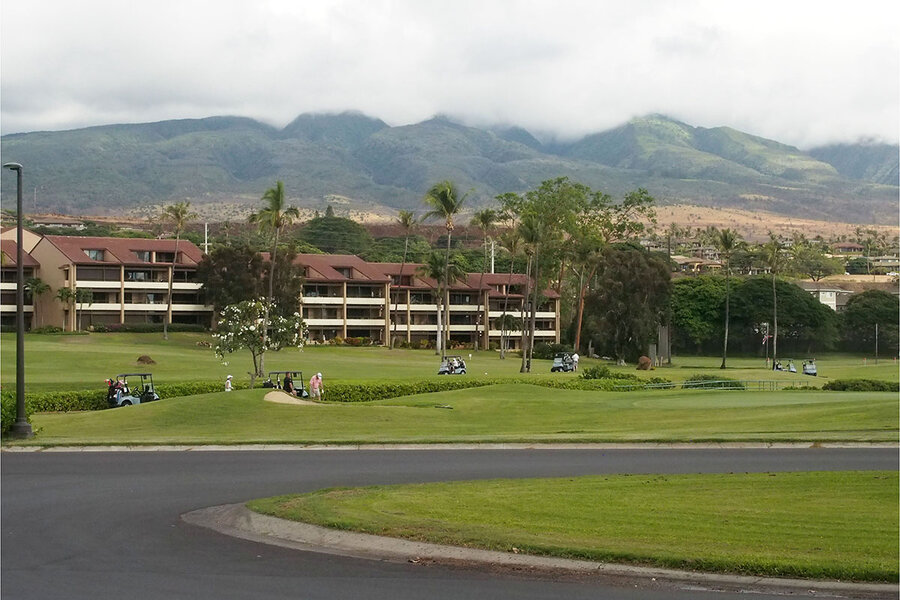
Cade Watanabe occupies the highest elected position for the Unite Here Local 5 union, which represents over 1,000 employees in Maui, including 150 who “lost everything” in Lahaina.
“We want tourism to reopen. Our members need their jobs,” says Mr. Watanabe. “But at the same time, I think the community will be more supportive of the reopening if the real needs of the community on [the] island are being met.”
The Hawaii Tourism Authority urges Maui visitors to pack “patience and grace” and not to ask residents about their disaster experience.
At Hula Grill by West Maui’s Kaanapali Beach, sunburned visitors chat over drinks.
“You don’t know what to do. You stay out of the way mostly,” says Mike, visiting Maui from New Mexico for the first time with his wife. “The locals are not very friendly. They’re in trauma; what do you expect?
“You know it’s sad; you drive by it every day,” says Mike, who declined to give his last name.
By “it,” Mike means Lahaina town, just a few minutes down the road.
Lahaina is bandaged, its wounds still visible but partially obscured. The town is closed. Construction fences line the Lahaina Bypass Road, but the burned coconut trees still stick out. Police cars, concrete barriers, and handwritten signs mark the outline of the decimated areas. Officials say 97 people lost their lives and over 2,000 homes and businesses burned in the infernos.
“I vote for less tourism”
While many Maui residents seem to espouse a necessary-but-not-ideal mindset about tourism, several students from Lahainaluna High School voiced a different message.
“Honestly, I vote for less tourism,” said one of the students as he soaped down his wetsuit hood and slipped it over his head, getting ready to go spearfishing. “Right now is just not the right time.”
The students were confident that they could sustain themselves off the land and ocean.
Worries about water and land, both increasingly finite resources on Maui, continue to be major points of dialogue.
The Lahaina fires and subsequent debate over reopening “revealed the cracks in the economic system,” says Malia Akutagawa, an associate professor of law and Hawaiian studies at the University of Hawaii at Manoa. True recovery, she says, should be consistent with the Hawaiian ethic of sustainability.
“The Hawaiian way of doing things is prevention,” says Professor Akutagawa, enacting “care for the aina [land], rather than extracting from aina.”
While discussions over tourists, resources, short-term rentals, and long-term effects will continue, the people most affected are those like Mr. Pascual who call Lahaina home:
“You try to move on. You can’t forget. You do the best you can.”

What a Texas-sized battle over state history means
For one prominent Texan, academic historians have gone too far. He sued the Texas State Historical Association, saying it isn’t adding depth to history, but vilifying the state’s greatest figures. But the lawsuit wasn’t about the past, really. It was about defining the story of Texas for the future.
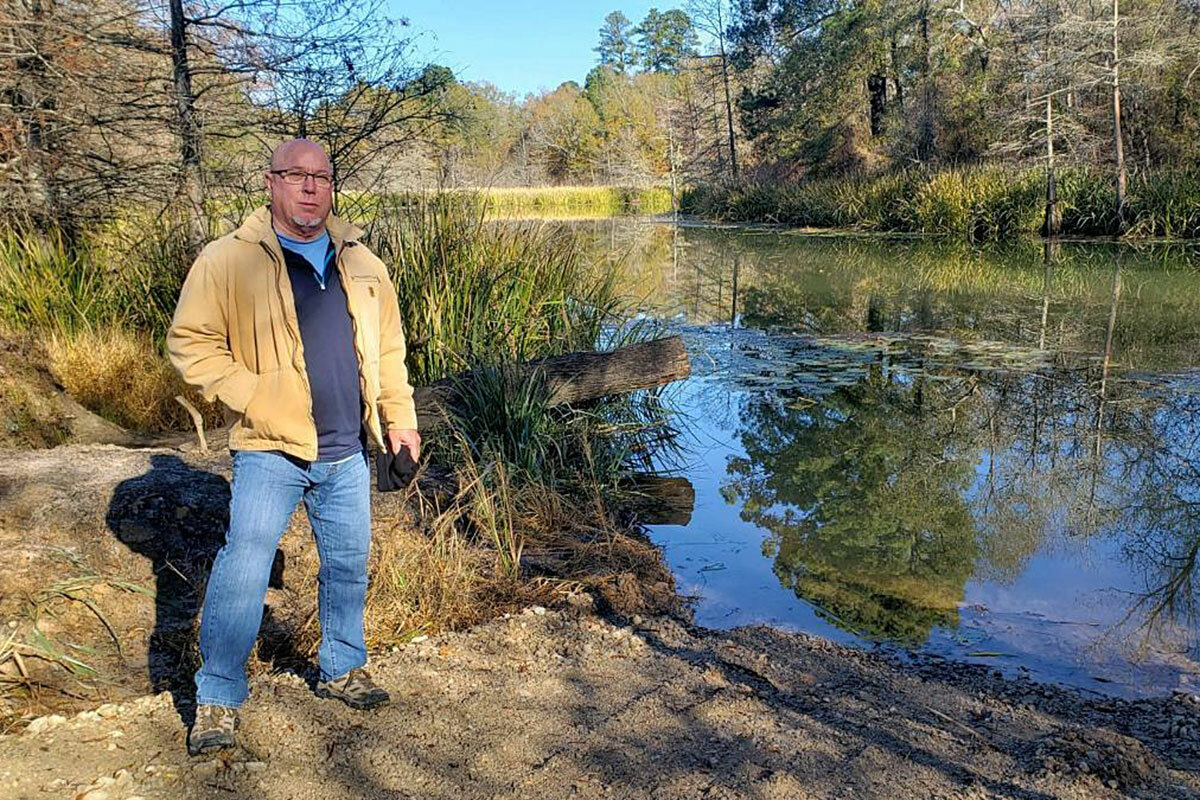
- Quick Read
- Deep Read ( 9 Min. )
Gary Pinkerton discovered his love of Texas history in his backyard – following the famous footprints of Sam Houston and Davy Crockett down an old smuggler’s path in his family’s pasture. For J.P. Bryan, the first two antique firearms he acquired as a boy led him to open a museum.
Both Texans – retirees who love their state’s history – found themselves on opposite sides this year. The line was what, exactly, history is for.
Texans love their history, even as some of its defining features have, under scrutiny, moved closer to the realm of myth. So perhaps it’s no surprise that here, as in other parts of the United States, history has become a front in the political culture wars.
“We have multiple views of America. That’s not an opinion; that’s a fact,” says Jonathan Zimmerman, a professor at the University of Pennsylvania who studies the culture wars and the politics of education. “But what do you do about that fact? That’s the question.”
A lawsuit brought by Mr. Bryan and opposed by Mr. Pinkerton and other historians settled before trial, but the broader dispute around history and its value for the present day remains.
“We’ve forced ourselves into an ‘either-or’ society ... when we live in an ‘and’ kind of world,” says Mr. Pinkerton. “As a country, as a community, we’re going to need to find more ‘and’ solutions.”
What a Texas-sized battle over state history means
Early Texas history once marched across land owned by the Pinkerton family for four generations.
On their way into the history books, the famous feet of Sam Houston, Davy Crockett, and other icons first tramped from the Red River down the historic road of Trammel’s Trace. What began as a smuggler’s route became, in the chaotic decades around Mexican independence, a primary causeway for Anglo immigrants (white, English-speaking immigrants) looking to settle beyond America’s southwest frontier.
The trail passed right through a pasture on Pinkerton land in Rusk County, Gary Pinkerton’s father mentioned one day. Mr. Pinkerton was hooked.
“I began to feel history rather than just learn about it,” says the retired human resources director.
He spent 10 years driving the back roads of East Texas and combing through historical records. What began as a family history project became a forensic historical investigation. Eventually, it became a book.
“The more I researched, the more I learned things that just weren’t true – myths and legends that had floated around,” he says.
For J.P. Bryan, his love of Texas history was sealed with the first two artifacts he acquired as a boy: a Moore’s Patent Front Loading Revolver and a Sharps Patent Four-Barrel Derringer.
The antique firearms formed the basis of the private collection he displays at the Bryan Museum in Galveston. When visitors begin a tour, a framed painting comes to life with a recorded welcome from Mr. Bryan.
The museum, he says, will walk visitors through “one of the greatest events in history ... the settlement of the American West.”
One August morning, the real Mr. Bryan sits in the museum. In a white-and-blue seersucker suit, the multimillionaire and former oil executive explains why he thinks Texas “has the greatest history of any state in the Union.” From the Texas Revolution to the cattle drive era, to oil and gas innovation, the state has been the setting of some of the world’s most compelling stories, he says. Mr. Bryan believes that history should inspire.
“We as historians should be looking for those opportunities,” he says. “But at the same time, we don’t try to hide things, or cover it up and make it mythology or legend.”
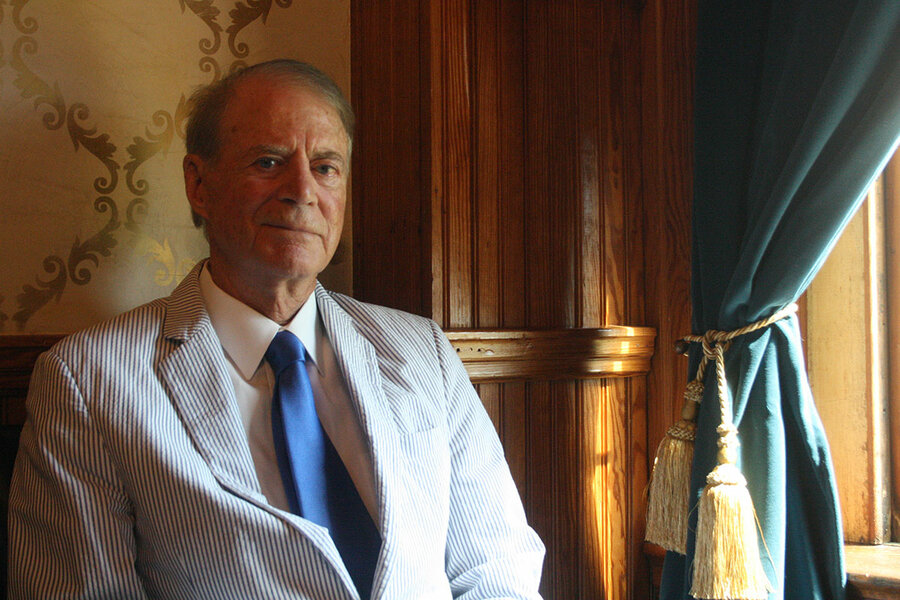
Both Texans – retirees who love their state’s history – found themselves on opposite sides this year. The line was what, exactly, history is for.
Texans revere their history, even as some of its defining features have, under scrutiny, moved closer to the realm of myth. Texas exceptionalism draws from wells of historical experience, from its nine years as an independent country to its globally powerful modern economy. So perhaps it’s no surprise that here, as in other parts of the United States, history has become a front in the political culture wars.
“We have multiple views of America. That’s not an opinion; that’s a fact,” says Jonathan Zimmerman, a professor at the University of Pennsylvania who studies the culture wars and the politics of education. “But what do you do about that fact? That’s the question.”
In Texas, controversy this summer centered on Mr. Bryan – specifically a lawsuit he filed against the leader of the Texas State Historical Association (TSHA). Mr. Pinkerton was among the historians who signed a petition opposing Mr. Bryan’s lawsuit.
The dispute goes beyond the discomfort some have with historians revisiting old heroes with a more critical eye. It goes beyond historians widening the spotlight beyond a singular focus on the great white men of history. Mr. Bryan is a lateral descendant of one of those men – Stephen F. Austin, one of the founding fathers of Texas – and he recognizes the need for state history to tell more diverse stories. But academic historians, he contends, have been going too far, seeking to vilify certain figures and victimize others.
Academic historians argue they’re not seeking to vilify anyone, and that historians also shouldn’t approach their work with rose-tinted glasses. Merely making history more diverse and inclusive, they believe, is a superficial gesture that avoids the deeper issue at the heart of the culture war.
“What we did to solve any history war was to add a new group to the same story,” says Professor Zimmerman. “Everyone gets in; everyone gets to be a hero or heroine. It’s democratic in the sense that it’s inclusive, but it’s not democratic in the sense that it’s critical.”
Historians have a duty to study the uglier chapters of the past, these historians believe, even though it may make for uncomfortable reading.
“For so long, the history of Texas was the history of great white men on horseback,” says Gregg Cantrell, a history professor at Texas Christian University.
“It’s the job of the historian to tell the truth. If you’re inspired by the truth, great,” says Professor Cantrell. “Sometimes the truth is not pleasant; sometimes the truth does not inspire you; sometimes the truth is not heroic. And if we only tell the kind of truth that is inspirational or heroic, then we’re not really telling the truth at all.”
The lawsuit settled before trial in August, but the broader dispute around history and its value for the present day remains.

“The way the history of Texas is written”
Formed in 1897, the historical association bills itself as the oldest learned society in the state. The main functions of the TSHA, a membership organization of academic and amateur historians, are putting on educational programming and curating the well-respected and widely read Handbook of Texas, Southwestern Historical Quarterly journal, and Texas Almanac.
For most of that 126-year history, the TSHA operated in relative anonymity. But a few years ago, some members say they noticed things changing. What had been a friendly, perhaps occasionally dull community of professional and amateur historians became more divided.
“There used to be more of a sense of community,” says Michelle Haas, a member and amateur historian.
The organization became more focused on what she describes as “esoteric” subjects. She says she heard from people over the past decade who stopped going to conferences, or unsubscribed from publications because “there’s nothing I want to read.”
One lightning rod moment came in 2021, when Walter Buenger, the chief historian for the TSHA, told USA Today that the Alamo became a “symbol of Anglo-Saxon preeminence” that has been used as “a defense of white privilege.” When Mr. Bryan, a former president of the organization, returned the next year as interim executive director, he noticed a similar trend: academics advancing what he describes as a “narrative” of “victimization and villainization.”
Earlier this year he filed his lawsuit against Nancy Baker Jones – both individually and in her capacity as TSHA president. He sought to reorganize the board, in accordance with the association’s bylaws, to be “balanced substantially” between academic and nonacademic members.
Early on, it was clear the lawsuit was about more than bylaws.
“How this whole thing goes will determine the future of the way the history of Texas is written,” Mr. Bryan told The Galveston County Daily News in May. “If we keep on this path, we’re going to lose it all. There’s nothing inspiring when everyone’s a villain or crook or usurper of wealth.”
“History 101”
A segment of the membership came out in vocal criticism of the lawsuit, supporting Dr. Jones. Among the disputes is whether the legal question at the heart of the lawsuit has been resolved: What exactly constitutes an “academic” historian versus a “nonacademic” historian?
The organization’s bylaws describe an academic as “an active or retired employee of an accredited academic institution” whose position involves teaching, or researching history. But that “can be arbitrary,” says Sonia Hernández, a history professor at Texas A&M University and a member of the TSHA board.

“This whole legal issue can very well reemerge in the future if we don’t have a clear understanding of what we mean by these categories,” she adds. But “this was about something else, and how we know this is because ... he said this was a battle over the narrative of Texas history.”
Academics also dispute the notion that the association had taken a sudden leftward turn.
“There’s a lot of traditional history that’s been published there, too,” says Professor Hernández, about the Southwestern Historical Quarterly. A 2021 issue around the time of Dr. Buenger’s comments included articles on Spanish settlers, German midwives, and a Civil War naval surgeon.
But “historians are continuously revising narratives based on the availability of source material, based on the analysis of historical material outside of Texas,” she adds. “That’s History 101.”
In a sense, Professor Cantrell, at Texas Christian University, embodies that narrative journey. One of the former TSHA president’s first books was a biography of Austin. Almost a quarter century later, his next book is going to be about lynching in the state.
The association’s academic members had “long prided themselves on the organization being a big tent,” says Dr. Cantrell. “Really what’s changed has been the insertion of politics in areas of life that really weren’t present before.”
“We’re in a time when objectivity is hard”
Weeks before trial, the parties settled in mediation, with Mr. Bryan appearing to get many of the changes he was calling for. Dr. Jones resigned, along with the secretary of the association, Stephanie Cole, a history professor and Dr. Cantrell’s wife.
Some professional academics – and some nonacademics – are concerned about where the association might now go from here. Mr. Bryan says nothing is changing when it comes to the content of the organization’s periodicals.
“We’re just trying to grow everything that we’re doing, and it doesn’t have anything to do with me changing the [historical] narrative,” he adds. “The only thing that will change is that [with more] balance, there will be more narrative from people that don’t necessarily share the academic view of history.”
And that should have positive effects for the association, and for Texans as a whole, says Ms. Haas, the amateur historian, who had commented on a lost sense of community.
“If you don’t agree on which history should be promoted the most, that’s good. Fight it out,” she adds.
But the lawsuit has strained relationships and damaged trust. Some members say they’re considering leaving, perhaps to start a new organization. After the settlement, a survey of members who signed the petition objecting to Mr. Bryan’s lawsuit found that 87% support forming “a new organization to support Texas history.” So far eight board members and committee members have resigned.
Historical scholarship will continue no matter if, or how, the TSHA changes. But professional historians say that, after a generation in which historical study has grown more diverse and inclusive, historical scholarship of Texas needs to keep its critical eye.
“Learning new things about the past does not mean that we’ve lost tether to what we thought we knew. It’s just that what we know now has expanded,” says Sarah Gould, a historian and executive director of the Mexican American Civil Rights Institute in San Antonio.
What academic historians fear is the vanishing of history that shows Texas icons – be it Alamo defenders or Texas Rangers – in a negative light. What they worry about is the TSHA becoming, in effect, the Bryan Museum writ large.
The new association president is Ken Wise, a state appeals court judge who hosts a Texas history podcast and is finishing a master’s degree in history. He acknowledges that the organization needs to rebuild trust between members, but he also believes all historians are facing external pressures from a society riven with distrust and ideological division.
“We’re in a time where objectivity is hard, and that’s not a good thing for historians,” he says.
Mr. Pinkerton says he’s reconsidering his support of the TSHA, but he’s also mindful of continuing to feed a conflict he believes is based on a false dichotomy.
The “assertion that there’s been a ‘woke’ takeover of TSHA is intended to ignite emotions, and when that happens people tend to ignore the facts,” he says.
“We’ve forced ourselves into an ‘either-or’ society ... when we live in an ‘and’ kind of world,” he adds. “As a country, as a community, we’re going to need to find more ‘and’ solutions.”

In Italy, a school teaches reconciliation over revenge
What if you had to be roommates with your enemy? That’s the idea behind a unique school in Italy. When students find calm away from conflict and ancient hatreds, the school has found, there is space to find peace.
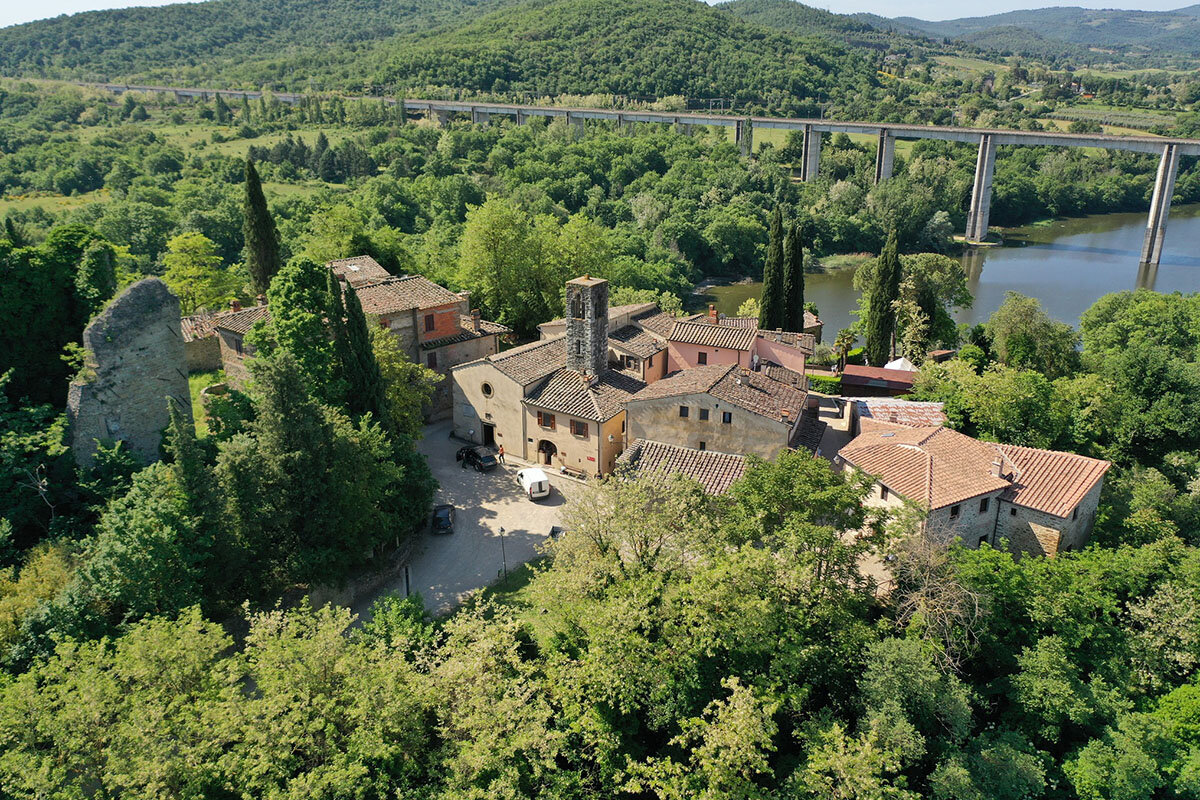
- Quick Read
- Deep Read ( 6 Min. )
-
By Stefania D'Ignoti Contributor
As conflicts rage around the world, there is a place of calm in Italy, a medieval citadel where students come to learn how to overcome the differences that have divided them. And, hopefully, make peace with each other.
They come together to undertake a two-year study and cohabitation program with a person whom history and politics have labeled as their “enemy,” and learn how to deconstruct and defang their hatred and conflict. Then they return to their countries of origin as agents of peace.
Russians and Ukrainians, Israelis and Palestinians, Bosnian Serbs and Bosnian Muslims – over 1,000 students have graduated from this unique program since it launched in 1997. Next year’s intake will include American and Canadian students ready to engage in a dialogue with their Indigenous counterparts.
“We didn’t want to build a Utopian place where students could pretend war doesn’t exist,” explains Franco Vaccari, co-founder and president of the school, called Rondine. “We wanted, rather, to create a neutral ground, away from the chaos of their homelands ... where our students could focus on a peaceful dialogue.”
In Italy, a school teaches reconciliation over revenge
At 9 a.m. sharp on the last day of September, as in every year for the past two decades, the bell signaling the beginning of a new academic year echoes across the cobblestone alleys of Rondine, a one-of-its-kind school near the Italian city of Arezzo.
Đorđe Mirkovic, a 24-year-old new student, looks excited as he peruses the wide variety of flags hanging just outside the main gate of the school’s premises, reflecting his fellow students’ different nationalities.
“I came here because I hope to become an overall better person ... to foster a better future for my country,” Mr. Mirkovic says.
Housed in a once-abandoned medieval citadel nestled among Tuscany’s lush woods and golden hills, Rondine every year hosts about two dozen students hailing from different parts of the world afflicted by conflict or trying to recover from it.
They come together to undertake a two-year study and cohabitation program with a person whom history and politics have labeled as their “enemy,” and learn how to deconstruct the reasons behind their hatred and conflict. Then they return to their countries of origin as peace leaders.
Born to Serb parents in the aftermath of the Balkans war, when an ethnic conflict between Orthodox Serbs and Bosnian Muslims (also known as Bosniaks) killed more than 100,000 people, Mr. Mirkovic will share a room and classes with a Bosnian Muslim for the next two years. When he returns home, Mr. Mirkovic plans to work on interfaith projects aimed at bringing Bosnia’s three main ethnic groups closer.
Since Rondine’s Citadel of Peace opened its gates in 1997, more than 1,000 students have graduated from this unique program. It’s here that Cheryl and Noa, from Lebanon and Israel respectively, have learned to share a hummus dish without fighting over its origins. It’s where Gorana, a Bosnian Catholic; Teodora, a Bosnian Orthodox; and Ana, a Bosnian Muslim, learned to forgive their parents’ narratives during their upbringing. And it’s where Oleksa and Vania, from Ukraine and Russia, are learning to watch the news together, without hurling insults at each other.
“We didn’t want to build a Utopian place where students could pretend war doesn’t exist,” explains Franco Vaccari, co-founder and president of Rondine. “We wanted, rather, to create a neutral ground, away from the chaos of their homelands and bigger Western cities, where our students could focus on a peaceful dialogue.”
Learning to see each other
The complex’s ancient gray stone buildings today host several classrooms, prayer rooms, a canteen, and sports facilities. Students occupy dormitories with double rooms to facilitate a sense of communal life, where people from two opposite sides of a conflict are encouraged to live together, see each other, and eventually forgive each other.
Upon arrival at Rondine, they are enrolled in an intensive Italian-language program. Then they focus on two main classes taught by expert peace-building trainers: methodological and leadership skills to deconstruct the idea of “the enemy,” and reconciliation.
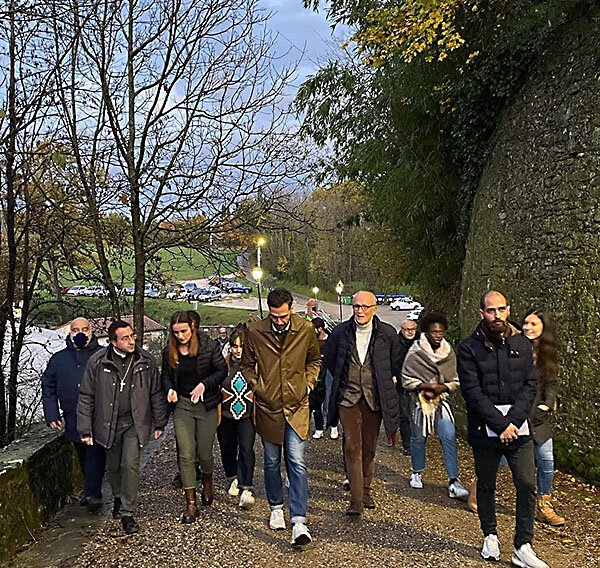
For that, teachers use what they call the Rondine method.
“It is a scientific method we developed to help students see conflict as an opportunity for growth,” explains Valentina Pierucci, who has been responsible for educational planning at Rondine for the past five years.
“Before transforming the conflict with the ‘enemy,’ we first help them solve the conflict within themselves,” she explains. “We help them become aware that conflict cannot be erased from everyday life, so we switch perspective and show them how to peacefully live in conflict. After all, conflict is simply a part of human relationships.”
The makeup of the student body depends on the state of current affairs when the students apply. Next year’s intake will include U.S. and Canadian students ready to engage in a dialogue with their Indigenous counterparts.
This year, new students come from Armenia and Azerbaijan, Ukraine and Russia, and Colombia and Venezuela. Historic conflict areas, such as Israel and the Palestinian territories, are almost always represented.
Living together in wartime
This year, the Israeli and Palestinian students have been under intense pressure since a surprise attack on Israel by radical Islamist militants from Gaza on Oct. 7 prompted Israel to declare war and launch a ferocious aerial bombardment of the Gaza Strip.
Two months ago, Hely, a second-year student from a town near Tel Aviv, had said she felt ready to embark on her last year at Rondine. Recently returned from Jewish new year celebrations with her family, she had been welcomed back by her Palestinian roommate, 29-year-old Malak, with a “Shana tova!” and a hug.
Rondine “has been a big opportunity to meet people from the other side of the conflict I wouldn’t have otherwise had a chance to meet,” Hely said in an interview conducted before the war began. “The first year was a chance to ask myself a lot of questions I didn’t even know I had, and to rebuild myself at age 28, which I never thought was possible.”
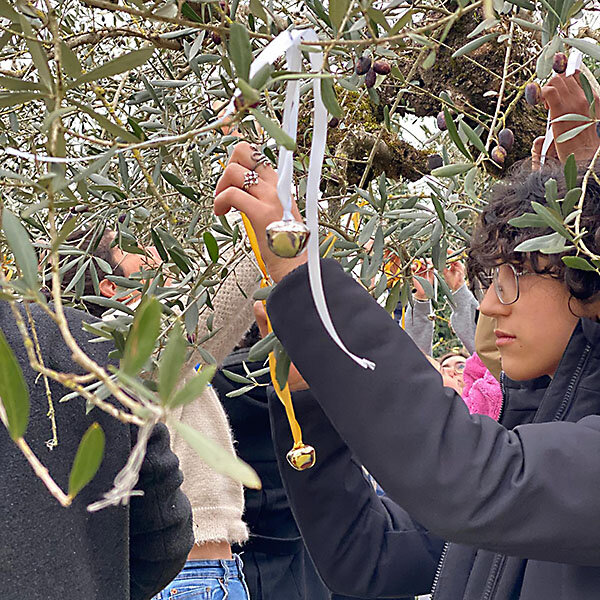
Malak, also talking before the war, explained that Rondine had given her the chance to begin two different journeys, an individual one and a collective one, helped by peers coming from different areas with similar social frictions.
“For me, it was a surprise learning how much Hely and me are alike, from our lifestyle to the relationship we have with our families. I didn’t expect to relate to my ‘enemy’ so much, and that’s something I wouldn’t have noticed if I hadn’t come here,” Malak said.
Swallows playing the role of doves
Neither Malak nor Hely wanted to speak publicly after the outbreak of war, but their experience will severely test one of the Rondine method’s founding principles – that seeing one’s counterpart living everyday life helps people in conflict situations to humanize the “other,” and bridge divides.
Their journey will not end with graduation. Each new graduate is required to undertake a one-year peace-building project in his or her homeland. That part of the experience was his main goal when he opened Rondine, explains Mr. Vaccari.
“We chose the name ‘Rondine’ [which in Italian means ‘swallow’] so that they would take with them the experiences learned in Italy when they flew back to where they had migrated from,” he says.
Ruzica Markovic, a Bosnian Croat who was born a few months after the Bosnian war cease-fire, graduated from Rondine last July. Back in her native Bosnia-Herzegovina, she is engaging in interfaith activities through intercultural cafes, summer camps, and conferences to give young people more self-confidence and foster a more cohesive future for her country.
“At Rondine, I learned that if someone asks me for a glass of water, I don’t ask why; I don’t ask who it is; I just give it to them,” Ms. Markovic explains in a video call from Sarajevo. “I learned to see the other person as myself: a being with emotions, challenges, pain, frustrations, maybe some traumas. That’s the lesson I brought back home.”
Ms. Pierucci, the educational planner, insists that the school exists to train not conflict analysts and experts, but rather agents of positive change in areas where they are most needed. “Sometimes, when the [TV] news comes on and they watch together in the common living room, for a brief moment they become enemies,” she acknowledges.
“But,” she adds, “the many opportunities at the school – shared classes, social events, or even a simple soccer match – make them realize the human being behind the nationality again.”

Points of Progress
Jaguars in Mexico, snow leopards in Bhutan
Our weekly roundup of progress around the world has a strong sense of home – newly protected homes for nature in Mexico, a safe place for snow leopards in Bhutan, and help for older adults and people with disabilities in the United Kingdom. We also tackle food waste in Saudi Arabia and drinking water in China.
-
Erika Page Staff writer
-
Angela Wang Staff writer
Jaguars in Mexico, snow leopards in Bhutan

1. Mexico
Mexico created 16 new Protected Natural Areas, expanding the country’s list of federally safeguarded places to 203. The recently added space, distributed among eight coastal states, equals more than three Great Smoky Mountains National Parks, or 651,265 hectares (2,515 square miles). Federal protections generally allow some tourism and sustainable development but promote wildlife and habitat conservation.
In Campeche state, which now includes the greatest amount of protected area in Mexico, the expansion of the Calakmul Biosphere Reserve includes seven Areas Voluntarily Destined for Conservation. That designation means that landowners and farmers of ejidos – communally managed federal lands typically used for agriculture – agree to sustainable uses of the land in cooperation with the government. Campeche’s protected areas include an important wildlife corridor used by jaguars and provide habitat for endangered Yucatán black howler monkeys and 350 species of birds. The smallest Protected Natural Area recently designated is Playa Delfines, a popular 10-acre beach in Cancún.
Mexico is one of the most biodiverse countries in the world, with 10% to 12% of the world’s species calling it home.
Sources: Mongabay, National Commission of Protected Natural Areas
2. United Kingdom
The U.K. is supporting older adults and people with disabilities with additional funds to adapt their homes to changing needs. Homeowners, renters, and those in social housing can apply to local authorities for a grant that helps cover improvements such as lighting controls, railings, or the addition of a downstairs room.
The grants are the first half of a two-year, £102 million ($123 million) program and part of putting “people at the heart of care” – a 10-year initiative to reform the country’s adult social care system. The program seeks to empower local councils to more nimbly make grants to improve independent living and reduce hospital stays. Grant amounts are income- and location-dependent. Those living in Wales can apply for up to £36,000 ($43,600).
The U.K. government already annually provides £573 million for local authorities to provide home improvements for disabled people. Since 2010, half a million homes have been renovated, backed by £4.8 billion in government funds.
Sources: Disability Insider, Gov.UK
3. Saudi Arabia
Startups in the Middle East are tackling high rates of food waste. The Food and Agriculture Organization estimates that a third of global food production is wasted. In Saudi Arabia, up to half of solid waste comes from food. Research in the region suggests a culture of generosity and hospitality is one factor on the consumer end of the high rates of waste.
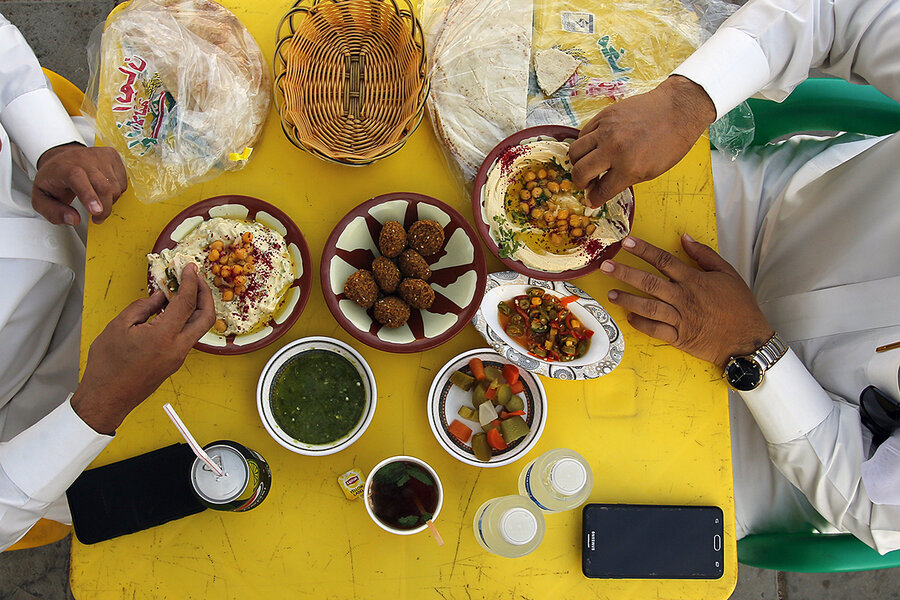
With the Saudi government in the early stages of efforts to reduce waste and align with the country’s 2030 sustainability goals, for-profit businesses are addressing the problem with a range of solutions, from composting to food delivery. In the cities of Jeddah and Riyadh, the phone app Barakah (meaning “blessing”) connects customers with restaurants and grocery stores that offer fresh surplus food at a discount.
Some researchers think that marketing appeals to consumer religiosity could encourage people to counter food waste. Rabah Habiss, a co-founder of Barakah, said that a factor influencing the app “was our Islamic teachings, which stress the value of preserving food rather than discarding it.”
From Morocco to Egypt to the United Arab Emirates, other small businesses are promoting the value of “ugly” produce and restaurant meals that would otherwise be thrown out.
Sources: Arab News, Wamda, Frontiers in Sustainable Food Systems
4. Bhutan
Bhutan’s snow leopard population increased from 96 to 134 since the first national survey in 2016. Snow leopards live in the mountains of a dozen Asian countries; their habitats face multiple threats, including environmental degradation, poaching, climate change, and conflict with humans. As the global population of snow leopards declines, Bhutan has emerged as a promising source population for the region, given a vast stretch of suitable snow leopard terrain bordering India and China. Camera traps in 310 locations spread over 3,475 square miles documented the increase, suggesting that habitat conservation and anti-poaching measures are working.

As leopard populations rise, they could pose a threat to yak calves and the herding communities that share the leopard’s environment. Researchers recommend livestock insurance coverage, improved fencing measures, and awareness campaigns for residents to minimize possible harm. In the long run, a strong snow leopard population is a sign of a healthy mountain habitat. The rebound of this apex predator “indicates a healthy alpine mountain ecosystem, which is a critical water source for millions of people downstream,” says Dr. Pema Wangda, executive director of the Bhutan for Life Fund Secretariat.
Sources: World Wide Fund for Nature, Bhutan Foundation
5. China
A new desalination device produces drinking water more efficiently than ever before. The system, designed by engineers at Shanghai Jiao Tong University in China and the Massachusetts Institute of Technology, relies on natural sunlight to heat salt water. Thanks to a multistage configuration of evaporators and condensers organized into upper and lower sections, water flows in eddies, mimicking the thermohaline circulation of deep-ocean currents controlled by temperature and salinity. The water and salt are circulated so that the salt left behind during the evaporation process doesn’t clog the system – an issue in previous design attempts.
The researchers estimate the apparatus can produce over a gallon of drinking water per hour if built to the size of a small suitcase. They tested the model using water of varying levels of salinity and say each device can last years without need for repair. “For the first time, it is possible for drinking water produced by sunlight to be cheaper than tap water,” said graduate student Yang Zhong. “This opens up the possibility for solar desalination to address real-world problems.”
Sources: MIT News, Joule
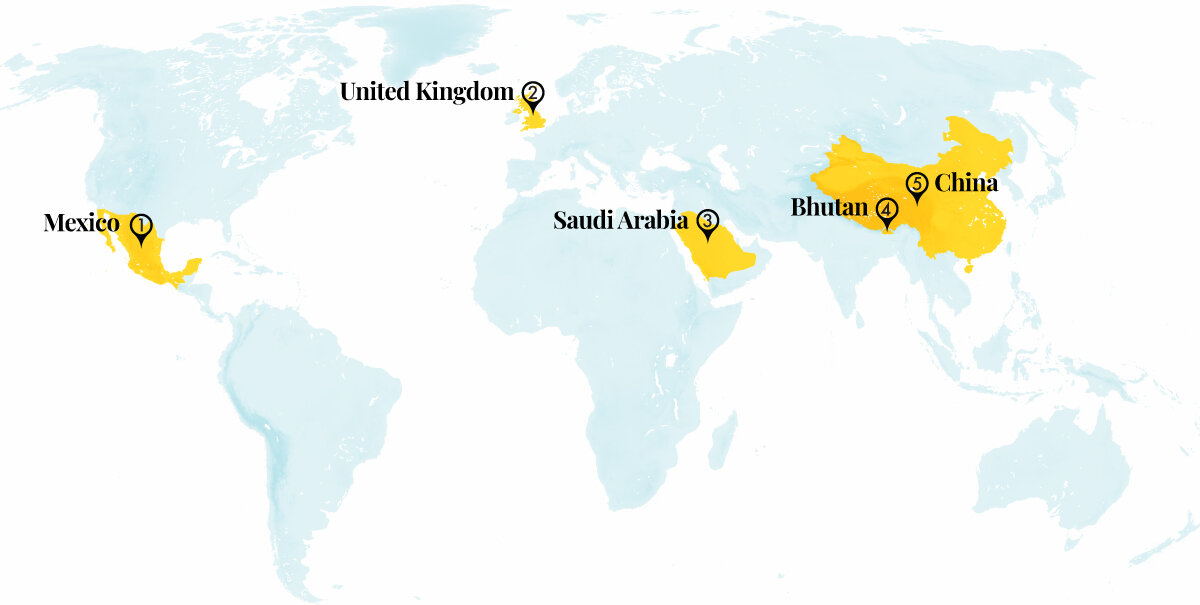
Other headline stories we’re watching
(Get live updates throughout the day.)The Monitor's View
For global youth, it’s green by choice
- Quick Read
- Deep Read ( 2 Min. )
-
By the Monitor's Editorial Board
This week the Monitor launched a seven-part series tracing how young people are forging a response to climate change. Rather than finding despair over slow action by governments, reporters found individuals relying on enterprise and ingenuity to act. In less wealthy nations, they found young people who reject helplessness and are unwilling to wait for the grown-ups to resolve their disputes.
Take a young climate activist in Bangladesh, Farzana Faruk Jhumu. She wants to change the way the Global North talks about the Global South as being vulnerable or doomed. “We want to show there is hope and many solutions are already there,” she said.
For youth from Namibia to Bangladesh, the world’s changing weather patterns leave no time for lengthy debates. Climate change, as the Monitor reports, “is shaping a mindset revolution” among the emerging generations.
The most challenging intervals of human history have often resulted in great transformations led by youthful thinkers. That may be the most salutary disruption of climate change.
For global youth, it’s green by choice

This week the Monitor launched a seven-part series tracing how young people are forging a response to climate change. Rather than finding despair over slow action by governments, reporters found individuals relying on enterprise and ingenuity to act. In less wealthy nations, they found young people who reject helplessness and are unwilling to wait for the grown-ups to resolve their disputes.
Take a young climate activist in Bangladesh, Farzana Faruk Jhumu. She wants to change the way the Global North talks about the Global South as being vulnerable or doomed. “We want to show there is hope and many solutions are already there,” she said.
For youth from Namibia to Bangladesh, the world’s changing weather patterns leave no time for lengthy debates. Climate change, as the Monitor reports, “is shaping a mindset revolution” among the emerging generations. Some have turned to protest. Others, like youth in Montana and Portugal, have taken governments to court.
Yet the real activity is happening largely out of public view – in local projects often shared on Instagram and Facebook that reflect “a new ethos about consumption, ‘progress,’ and what it means to have a good life,” the Monitor reported.
In Kenya, a young entrepreneur has harnessed satellites to collect data on climate and environmental fluctuations. That information is helping nearly 3,000 small-scale farmers check on soil health and make better-informed crop decisions. The project’s goal is to reach 15,000 family farmers in 20 countries by the end of the year. In Namibia, the Monitor met Deon Shekuza, a young “climate influencer” who devotes his time to teaching his peers about green hydrogen and other renewable energies.
For Mr. Shekuza, climate change fits into a continuum of Africa’s pursuit of democracy and equality forged by earlier struggles against slavery, colonialism, and apartheid. “In our day, for my generation, the environment has presented itself as the challenge of our era,” he said.
The most challenging intervals of human history have often resulted in great transformations led by youthful thinkers. That may be the most salutary disruption of climate change.

A Christian Science Perspective
Each weekday, the Monitor includes one clearly labeled religious article offering spiritual insight on contemporary issues, including the news. The publication – in its various forms – is produced for anyone who cares about the progress of the human endeavor around the world and seeks news reported with compassion, intelligence, and an essentially constructive lens. For many, that caring has religious roots. For many, it does not. The Monitor has always embraced both audiences. The Monitor is owned by a church – The First Church of Christ, Scientist, in Boston – whose founder was concerned with both the state of the world and the quality of available news.
One hundred percent confident
- Quick Read
- Read or Listen ( 3 Min. )
-
By Dale Matheny
Recognizing the spirituality and wholeness of God’s creation brings authority to our prayers – with healing results.
One hundred percent confident
Conventional wisdom says we can’t be absolutely sure about anything. The field of quality control, for example, indicates that it is prohibitively costly – some would say impossible – to achieve perfection in manufacturing. But when we pray for healing, is it possible to be 100% confident in God?
Christ Jesus introduced the world to the concept of perfect assurance and absolute, calm conviction in good, God. His prayers were demonstrations of full certainty that God was governing man (the spiritual identity of each of us) as perfect, 100% pure, right in the midst of trouble. And healing was the result.
When he raised Lazarus from the dead, Jesus said, “Father, I thank thee that thou hast heard me. And I knew that thou hearest me always,” and then he raised Lazarus with the command, “Lazarus, come forth” (see John 11:41-43). He didn’t ask whether it was possible to heal Lazarus; he clearly expected restoration to occur, based on his deep understanding that man was already and always perfect as God’s child.
He was so confident in God’s all-power that he thanked God for the healing before it was evident. That is “100%” thinking! Jesus knew the reality of God’s unchanging power and perfection so clearly that he had 100% confidence in God’s ability to heal. This total confidence in God is complete spiritual knowing.
I had a healing several years ago when I came to 100% conviction that God could and would heal me. I awoke one morning unable to walk as a result of what appeared to be painful shin splints. I was worried because I was in Scotland and scheduled to take a flight to London in a few hours. I had planned to tour London for several hours on the day prior to flying home to the United States. But I couldn’t move from my bed without pain.
This statement from “Science and Health with Key to the Scriptures” by Mary Baker Eddy came to thought: “You can prove for yourself, dear reader, the Science of healing ...” (p. 547). This promise made me feel that I could be healed if I just followed the precepts of healing I knew in Christian Science. I began specific prayer with the thought that all sickness, including this condition, is an “error of belief” (Science and Health, p. 208) and nothing more. I reasoned that if this was so, then what appeared as an unfortunate reality was only false evidence about my true, spiritual nature as God’s child.
Interestingly, as soon as I took this firm stand, I was bombarded with strong suggestions that I should doubt my prayer. I reached out to God, and remembered Jesus’ statement in the Bible telling us to ask anything in his name, and it would be done (see John 16:23). I did this and found that standing on the authority of the Bible gave me confidence that my prayer was valid and that I had the right to stand by it and experience healing.
It took only a few minutes of turning to God and praying along these lines before my thought changed to one of spiritual conviction. I saw that my true being was intact and had never been touched by the aggressive belief of ill health. I rejoiced in this truth. I then knew that I could stand up and go about my day. I did so. Completely free, I flew to London and joyously walked miles around the city. The next morning I caught my flight home, rejoicing in God’s goodness every step of the way.
How radical! When we’re entirely convinced that what we appear to be experiencing is only a misperception of the spiritual reality, and stand by this conviction with the authority of Christ, Truth, healing occurs.
The eternal perfection of God and His creation bridges the gap between hoping for a good-but-as-yet-undetermined human outcome and a conscious sense of 100% spiritual, perfect truth. Mrs. Eddy, the discoverer of the Science of Christianity, wrote, “The Christlike understanding of scientific being and divine healing includes a perfect Principle and idea, – perfect God and perfect man, – as the basis of thought and demonstration” (Science and Health, p. 259).
When we pray from the basis of “perfect God and perfect man” – untouched by false, material belief – we yield to deep spiritual conviction, based on our 100% spiritual identity. This not only removes fear, but brings out health and healing. And we joyously glorify God.
Adapted from an article published in the April 18, 2022, issue of the Christian Science Sentinel.

Viewfinder
The (new) King’s Speech

A look ahead
We’re so glad you could join us today. Tomorrow, Linda Feldmann will look back on the elections across the United States and see what they might be saying about political trends. The ballot measure on abortion rights in Ohio is top of the list.
Our team working from Gaza and the West Bank will also analyze developments from the past week and what they might suggest about the future of the Gaza Strip once the fighting stops.



